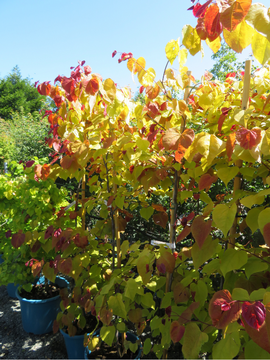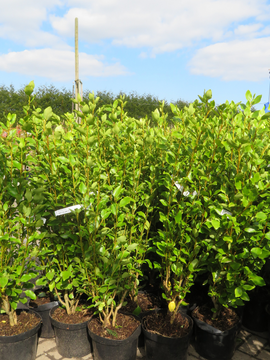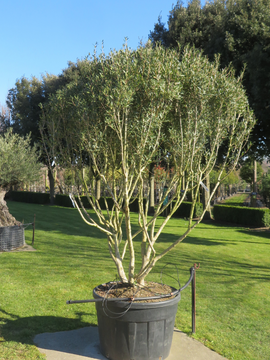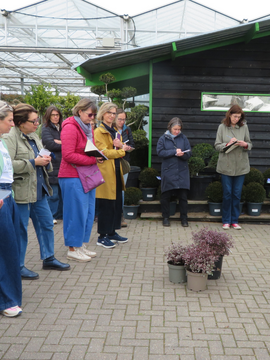
Mycorrhizal fungi or the ‘’friendly fungi’’ as it has also become known, has grown in popularity over the last few years with many landscapers and designers singing its praises once they have used it. We thought we ought to look into the mystery of mycorrhizal fungi in more detail. How does it work? What are the benefits? Can it be used on all plants?
So – what is this wonderful friendly fungi and how does it work?
The name mycorrhizal is derived from the Greek, ‘myco’- fungus and ‘rhiza’ - root. The fungi actually colonises the root, feeding off the sugars produced in the plant roots and in exchange helps to transport water and essential nutrients back to the root itself. Some people say that the mycorrhizal fungi act as a secondary root system to the plant itself. Both parties benefit and thus form a ‘symbiotic relationship’. This relationship has evolved over many years and there is fossil evidence dating back over 400 million years ago. The fungi reach far into the surrounding soil (further than the plant roots can reach) increasing the surface area in contact with the soil for nutrient and water absorption. There is also evidence that suggests the mycorrhizal fungi helps the plant to resist certain soil-borne diseases.
Mycorrhizal fungi first came to public attention in the 1880’s by a German botanist, Albert Bernard. His research work was initially largely ignored by scientists at the time who could not understand that fungal growth could live in plant roots without harming the plants. However with further research he convinced the cynics of the time that there was strong evidence of a mutually beneficial relationship between plant and certain fungi. Indeed over 90% of all known plant families have evolved by forming a symbiotic relationship with mycorrhizal fungi.
What are the benefits?
The increased root structure allows the plant to increase its uptake of more water and essential nutrients which results in a plant that is more tolerant of drought situations and has stronger growth. The resulting healthy, stronger root systems result in a better survival rate (especially for bareroot trees) and a plant that is more capable of competing against weeds than if no organic matter or fungi were added.
Mycorrhizal fungi can also help in the rehabilitation of degraded soil. This is of particular importance for areas where land has been cleared or is low in organic matter content. It is believed to be the only product to overcome rose replant problems.
As a totally naturally occurring organic additive, one application is all you will ever need. The fungi will naturally start to populate the surrounding area and result in an altogether healthier soil to plant into.
When should I use it?
It is advisable to use mycorrhizal fungi when planting any plants of high value especially trees but it is also of huge benefit when planting large permanent features such as hedges and specimen shrubs.
How do I use it?
The fungi must come into direct contact with the roots in order to start the symbiotic process
- Dig a planting hole
- Sprinkle some Rootgrow at the bottom of the hole to cover the soil surface
- Place the plant in the hole so that the roots are in contact with the Rootgrow granules
- Backfill as normal
- Water in and mulch as normal
It is best practice to make sure the roots come into direct contact with the fungi. The Mycorrhizal fungi attaches itself to the roots and increases the root surface area and thus increases water and nutrient uptake resulting in increased drought tolerance and difficult soil conditions. Mycorrhizal fungi can take many years to naturally colonise plants (up to 5 years), therefore by adding at the time of planting you are speeding up a natural process that has many benefits to the plant in the long term (the effect can be seen in 4-6 weeks). However, should you forget to use at the time of planting you can also use After Grow.
If planting a tree of any specification then an application of Mycorrhizal fungi is a must. Easy to apply and resulting in a stronger growing, self-sufficient tree is a plus in anyone’s language.
You will find mycorrhizal fungi on the shelfs branded as Rootgrow. There are a few options to select from, but whichever you choose you can rest assured that any plant you apply it to will benefit greatly. Rootgrow is available in pouches or buckets both of which are re-sealable and for use on containerised, rootball or bare root plants.




